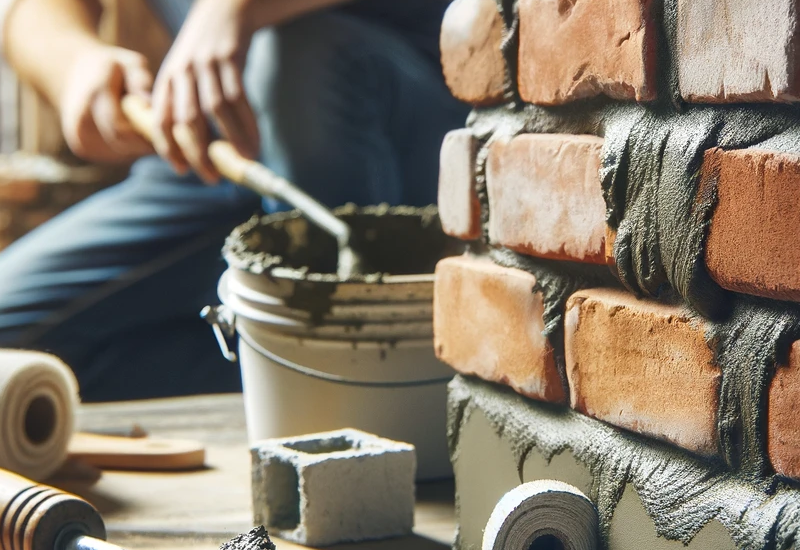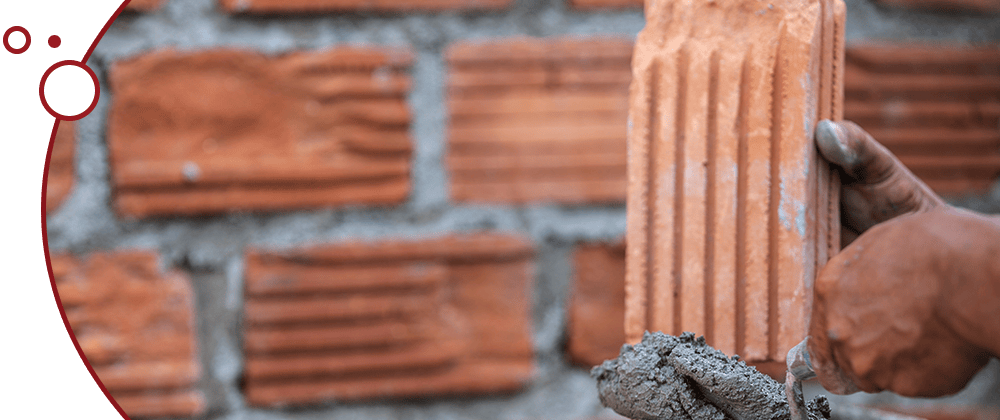
Brick repair tuckpointing is a vital process in maintaining and restoring the integrity and appearance of brick structures. Often overlooked, this practice not only ensures the longevity of brickwork but also enhances its aesthetic appeal. In this comprehensive guide, we delve into the nuances of brick repair tuckpointing, offering insights and tips for homeowners and professionals alike.
Table of Contents
What is Brick Repair Tuckpointing?
Definition and Historical Background
Brick repair tuckpointing, a term often used interchangeably with repointing, refers to the process of removing and replacing deteriorated, damaged, or missing mortar between brickwork. This technique dates back to the 18th century and was initially used to imitate high-end rubbed brick finishes. Over time, tuckpointing evolved into a practical solution for maintaining the structural integrity and aesthetic appeal of brick structures.
Importance in Modern Construction
In contemporary construction, tuckpointing serves as an essential maintenance task. It protects buildings from water damage, structural decay, and insulation problems. By filling in the gaps between bricks, tuckpointing reinforces the structure’s stability, prevents moisture ingress, and enhances thermal efficiency. It’s particularly crucial in areas with harsh weather conditions, where buildings are more susceptible to wear and tear.

Signs You Need Tuckpointing
Identifying Damage and Deterioration
Key indicators that your brickwork needs tuckpointing include crumbling or missing mortar, cracks in mortar joints, loose bricks, and water leakage inside the building. These signs often suggest that the mortar has weakened, which can compromise the building’s structural integrity.
Preventive Measures
Regular inspections and prompt repairs are vital preventive measures. Addressing minor issues early can prevent more significant, costly problems in the future. Homeowners should particularly look out for early signs of mortar deterioration and seek professional advice if unsure.
The Tuckpointing Process
Step-by-Step Guide
Tuckpointing involves several steps:
- Removing the old mortar to a certain depth.
- Cleaning out the joints to remove dust and debris.
- Mixing and applying new mortar.
- Carefully shaping the mortar to match the existing joints.
- Curing the mortar to ensure it sets properly. This process requires precision and an understanding of the specific type of mortar used in the original construction.
Tools and Materials Needed
Essential tools for tuckpointing include a hammer and chisel, mortar hawk, pointing trowel, joint raker, and a soft brush. Materials typically consist of mortar mix, which should match the existing mortar in color, composition, and texture to ensure uniformity and compatibility.
DIY vs. Professional Tuckpointing
When to DIY
DIY tuckpointing can be considered for small, accessible areas requiring minor repairs. It requires a basic understanding of masonry work and the right tools. However, DIY is only recommended for those confident in their skills and knowledge of brickwork.
Benefits of Hiring a Professional
Professional tuckpointing guarantees expertise, efficiency, and long-lasting results. Specialists have the right tools and materials, can accurately match mortar, and understand the nuances of different types of brickwork. They can also diagnose underlying issues that may not be apparent to a layperson.
Costs and Budgeting for Tuckpointing
Average Costs and Factors Affecting Price
The cost of tuckpointing varies based on the size of the area, the condition of the brickwork, and the location. On average, homeowners might expect to spend a few thousand dollars for a complete tuckpointing job. Factors like historical preservation requirements or the need for specialized materials can also influence the cost.
Planning Your Budget
Budgeting for tuckpointing should include a buffer for unexpected expenses, such as additional repairs discovered during the process. Seeking multiple quotes from professionals can help homeowners find a balance between quality and cost.
Maintaining Your Tuckpointed Brickwork
Routine Maintenance Tips
After tuckpointing, regular inspections and gentle cleaning can prolong the life of the mortar and brickwork. Avoid harsh chemicals and high-pressure washing, which can damage the mortar.
Long-Term Care Strategies
Implementing long-term care strategies, like ensuring proper drainage away from brick structures and addressing any water leaks promptly, can significantly extend the lifespan of tuckpointed brickwork.
Tuckpointing and Home Value
Impact on Property Value
Well-maintained brickwork and fresh tuckpointing can enhance a property’s curb appeal and increase its market value. It also signals to potential buyers that the home has been well cared for.
Tuckpointing as an Investment
Investing in tuckpointing is not just about maintaining the building’s appearance; it’s about protecting the investment in the property. It prevents more significant, expensive repairs in the future and ensures the longevity of the brickwork.
Choosing the Right Contractor for Tuckpointing
What to Look For
When selecting a contractor for tuckpointing, prioritize those with experience in your specific type of brickwork and a portfolio of previous work. Check for licensing, insurance, and references. It’s also essential to assess their understanding of historic mortar and brick types, especially for older buildings.
Questions to Ask Prospective Contractors
Inquire about their process, the materials they use, and how they plan to match the existing mortar. Ask how they address unexpected challenges that may arise during the project. Understanding their approach to customer service, timelines, and after-care service is also crucial.
Innovations and Future of Tuckpointing
New Techniques and Materials
The field of tuckpointing is evolving with advancements in technology. New materials, such as polymer-modified mortars, offer enhanced durability and flexibility. Techniques like laser cleaning and digital color matching are emerging, providing more precision in restoration work.
Trends in the Industry
Sustainability and energy efficiency are becoming increasingly important in the tuckpointing industry. The use of eco-friendly materials and practices that enhance a building’s thermal performance is a growing trend. Additionally, there is a move towards integrating digital tools for assessment and planning in tuckpointing projects.
Conclusion
In conclusion, brick repair tuckpointing is an essential maintenance practice for preserving the structural integrity and aesthetic quality of brick structures. Understanding when and how to undertake tuckpointing, whether to opt for a DIY approach or hire a professional, and recognizing the signs of mortar deterioration are crucial for proper upkeep. Although the cost of professional tuckpointing can vary, the investment significantly contributes to extending the lifespan of your property and maintaining its value. Regular inspections and maintenance are key to ensuring the lasting durability and beauty of brickwork, making tuckpointing an invaluable aspect of building care.
FAQs:
Q: What is the primary purpose of tuckpointing?
A: The primary purpose of tuckpointing is to repair and stabilize the mortar joints in brickwork, enhancing the structural integrity and aesthetic appearance of the building. It involves removing old, deteriorating mortar and replacing it with new mortar.
Q: How often should tuckpointing be done?
A: Tuckpointing is typically required every 25-30 years, but this can vary depending on the brickwork’s exposure to weather elements and the quality of the original materials used. Regular inspections can help determine the need for tuckpointing more accurately.
Q: Can I do tuckpointing by myself, or should I hire a professional?
A: While DIY tuckpointing is possible for minor repairs, hiring a professional is recommended for extensive work. Professionals possess the necessary skills, tools, and knowledge to ensure a durable and aesthetically pleasing result.
Q: What are the signs that my home needs tuckpointing?
A: Signs that your home needs tuckpointing include crumbling or missing mortar, visible cracks in the joints, loose bricks, and moisture intrusion inside the building. These indicate that the mortar has weakened and requires attention.
Q: How much does professional tuckpointing typically cost?
A: The cost of professional tuckpointing varies widely, typically ranging from a few dollars per square foot to several thousand dollars for an entire project. Factors influencing cost include the size of the area, accessibility, and the condition of the brickwork.


